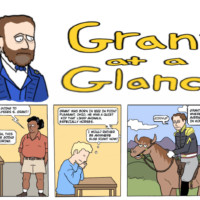
I can barely remember the time my neighborhood was diverse, but I remember when it stopped feeling like a community.
Before the changes started, I would go outside and see friendly faces, ones that I had known since birth. My street had block parties, and the whole block was my home.
Now, that feeling has disappeared, and the only place I feel welcome is behind my closed doors. Now, my street is filled with neighbors who don’t know my name, and don’t care enough to ask.
I have lived in the same house my entire life, but as time passes, my house feels more unfamiliar. With the changes come new people, neighbors who ask, “When did you move here?” As if I am an intruder in their neighborhood.
I have a total of three neighbors who I have known all of my life, and, not surprisingly, they are the only other people of color who still live on my block.
The biggest change is the amount of houses. Vacant lots are being filled, and houses are being torn down and replaced with condos. The housing cost has also risen drastically, becoming one of the strongest driving forces for the demographic change.
Walidah Imarisha, a writer and educator in Portland, says, “At the end of 2015, the State of Housing Report (said) that, if you were Black or Latino, if you’re indigenous, you could not afford to live in Portland. In many ways, that’s a return to the concept of being a racist White utopia, because Black and Brown folks can’t afford to live here.”
I am not the only one who has noticed these changes; my two older sisters who attended Grant have also noticed them in our neighborhood and the Grant community.
My second oldest sister, Lauren Lucas, graduated from Grant in 2011. “There are a lot more white people in the neighborhood,” she says. “I feel like a lot of the people of color have been pushed out of the neighborhood. (Developers) have been buying their houses, offering them large sums of money or raising their rent.”
“From the perspective of an athlete (at Grant), most of the volleyball program was diverse,” says Maya Lucas, my other sister, who graduated from Grant in 2013. “(For) basketball, I think my entire team was Black, and if you look at it now it’s not like that. So I definitely say it was more diverse when I was there.”
My neighborhood isn’t the only one that has changed in the past couple years. Gentrification is something that occurs beyond my neighborhood and beyond Portland.
Imarisha says, “Gentrification is the process of pushing out, usually Black and Brown people who live in a community to be replaced with businesses and individuals who are wealthier and Whiter.”
A common defense for policies that support gentrification is that they make neighborhoods safer. But why must safety go hand-in-hand with the removal of Black families and businesses?
Gentrification starts at the very beginning of Oregon’s history, when the Oregon Donation Land Act took millions of miles of indigenous land, and gave it away, for free, to White people.
Portland’s Black community started downtown by the railroad tracks overlapping Chinatown. Then, as downtown expanded and became a desirable area, Black people were pushed across the river to lower Albina where the Veterans Memorial Coliseum and Moda Center are now located. After the flood at Vanport, Albina was one of the only neighborhoods Black people were allowed to buy or rent homes in Portland. With the building of the Coliseum and major highways, the rising living cost continued to drive people out.
Because many Grant students live in the areas that have been gentrified, the population of Grant is becoming more White and more affluent.
Currently, the Black student enrollment in Portland Public Schools is decreasing. According to the 2007 enrollment summary, 15.6 percent of PPS students were Black students, while last year only 8.9 percent were Black. Those students were pushed out from Portland Public Schools into districts like David Douglas, whose Black student enrollment has increased. Since 2009, their enrollment of Black students has risen by about three percent.
Gentrification shrinks the diversity of Grant’s student body; in events like Race Forward, the lack of diversity often makes conversation run dry. During Race Forward, eyes are usually drawn towards me, with an expectation that I talk about my experiences. In these instances I find myself closing up, afraid that because I am the minority, my experiences will be shut down and disregarded.
Sometimes students will leave during Race Forward, deciding it’s not worth their time. This makes me want to close up even more. If students will not take Race Forward seriously, why should I take my time to say something?
Gentrification isn’t the only thing at fault for the lack of Black students at Grant, though it is definitely a contributor. One of the biggest perpetrators is Oregon’s racist history and its actions to keep Black people out by making laws such as The Black Exclusion Law, which prevented Black Americans from living in Oregon until 1926.
History cannot be changed. The only thing that can be done is stopping the pattern from repeating itself. Gentrification is still happening and will continue to happen until enough people care to change the method of “improving” a neighborhood, ideally to one that doesn’t push out the people already living there.
The most important thing is to recognize the change and notice differences where you live. Be aware that gentrification is happening, talk to those experiencing gentrification and learn from their perspective. Try to make people of color in your neighborhood feel welcome.
“This neighborhood used to be a place where (White people) didn’t want to live,” Maya Lucas says. “I just think that the city of Portland cares more about this area now that it’s more Caucasian than they did when it was a majority Black neighborhood.”




